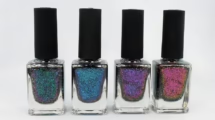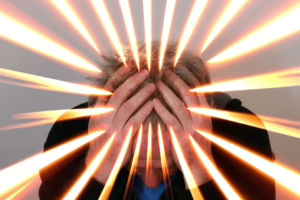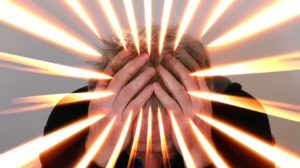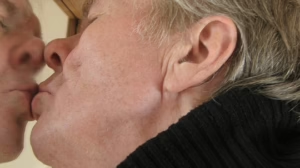The Role of Biology in Sexual Attraction: An In-Depth Look
Sexual attraction, a powerful and often overwhelming force, is a fundamental aspect of the human experience, driving mate selection, pair bonding, and ultimately, reproduction. While cultural norms, personal experiences, and individual preferences undoubtedly play significant roles in shaping who we find attractive, the underlying bedrock of attraction lies in our biology. This article delves into the multifaceted ways in which biology, encompassing genetics, hormones, neurochemicals, and sensory perception, influences and shapes our sexual attractions. We will explore the scientific evidence supporting the biological underpinnings of attraction, considering both the evolutionary advantages and the potential limitations of relying solely on a biological perspective.
1. Evolutionary Foundations of Sexual Attraction:
The cornerstone of understanding the biological basis of attraction lies in evolutionary theory. From an evolutionary standpoint, sexual attraction serves the crucial function of promoting successful reproduction and the propagation of genes. Individuals are, consciously or unconsciously, drawn to partners who exhibit traits indicative of good health, fertility, and genetic compatibility, thereby maximizing the likelihood of producing healthy and viable offspring. [1]
- Good Genes and Handicap Principle: The “good genes” hypothesis posits that individuals are attracted to traits that signal underlying genetic quality. These traits can include physical attributes like symmetrical features, clear skin, and vibrant hair, all of which are correlated with developmental stability and resistance to parasites and diseases. [2] The handicap principle, proposed by Amotz Zahavi, suggests that certain seemingly disadvantageous traits, like the elaborate plumage of a peacock, serve as honest signals of genetic fitness because only individuals with superior genes can afford to bear the cost of such a handicap. [3] In humans, characteristics like intelligence, creativity, and even altruistic behavior can be interpreted as handicaps, signaling an abundance of resources and genetic robustness.
- Reproductive Potential: Attraction is also strongly linked to cues associated with reproductive potential. In women, youthfulness, a low waist-to-hip ratio (WHR), and visible signs of ovulation have been linked to heightened attractiveness, as these features are associated with higher fertility and reproductive lifespan. [4, 5] Conversely, in men, traits like height, shoulder-to-hip ratio (SHR), muscularity, and a strong jawline are often perceived as attractive, potentially signaling physical strength, dominance, and the ability to provide resources and protection. [6, 7]
- Major Histocompatibility Complex (MHC): Perhaps surprisingly, even our immune system plays a role in attraction. The Major Histocompatibility Complex (MHC) is a group of genes involved in immune function. Research suggests that humans are often attracted to individuals with MHC genes that are different from their own. [8] This preference is thought to promote genetic diversity within offspring, leading to a stronger and more adaptable immune system. Studies have shown that women rate the body odor of men with dissimilar MHC genes as more pleasant. [9]
2. The Hormonal Orchestration of Desire:
Hormones are chemical messengers that play a critical role in regulating a wide range of physiological processes, including sexual desire, arousal, and attraction. The hormonal landscape is complex and differs between sexes, influencing both the initial attraction and the long-term maintenance of pair bonds.
- Testosterone: Often considered the primary male sex hormone, testosterone plays a crucial role in driving libido in both men and women. In men, testosterone levels are directly correlated with sexual desire, aggression, and the development of secondary sexual characteristics like facial hair and muscle mass. [10] While women have significantly lower levels of testosterone than men, this hormone still plays a critical role in their sexual drive and energy levels.
- Estrogen: Estrogen is the primary female sex hormone responsible for the development of female secondary sexual characteristics and the regulation of the menstrual cycle. Estrogen levels fluctuate throughout the menstrual cycle, peaking around ovulation, which is often associated with increased sexual desire and receptivity. [11] Estrogen also contributes to the maintenance of bone density, cardiovascular health, and cognitive function.
- Oxytocin and Vasopressin: These hormones, often referred to as the “love hormones,” play a crucial role in pair bonding and social attachment. Oxytocin is released during physical contact, such as hugging and sexual activity, promoting feelings of trust, bonding, and emotional intimacy. [12] Vasopressin, closely related to oxytocin, is also involved in social attachment and mate guarding behavior, particularly in males. Studies in prairie voles, known for their monogamous relationships, have shown that vasopressin receptors in the brain are crucial for forming and maintaining pair bonds. [13]
- Dopamine: A neurotransmitter associated with pleasure, reward, and motivation, dopamine plays a critical role in the initial stages of attraction and romantic love. When we encounter someone we find attractive, dopamine levels surge in the brain, creating feelings of euphoria, excitement, and intense focus on the object of our affection. [14] This dopamine-driven reward system is thought to reinforce the behaviors associated with seeking out and maintaining relationships.
3. The Neurochemistry of Love and Lust:
Beyond hormones, a complex interplay of neurotransmitters in the brain orchestrates the experience of love and lust. These neurochemicals influence our emotions, thoughts, and behaviors, shaping our perceptions of attractiveness and driving our pursuit of romantic connections.
- Serotonin: While dopamine is associated with the initial excitement of attraction, serotonin plays a role in regulating mood, anxiety, and obsession. Interestingly, studies have shown that individuals in the early stages of romantic love often have lower levels of serotonin, similar to those observed in individuals with obsessive-compulsive disorder. [15] This may explain the intense focus and preoccupation that often accompany new romantic relationships.
- Norepinephrine: Also known as noradrenaline, norepinephrine is a neurotransmitter associated with alertness, arousal, and the “fight or flight” response. When we are attracted to someone, norepinephrine levels increase, leading to physical symptoms like a racing heart, sweaty palms, and increased energy. [16]
- Phenylethylamine (PEA): Often dubbed the “love drug,” PEA is a naturally occurring amphetamine-like compound that is released in the brain when we are attracted to someone. PEA is thought to contribute to the feelings of euphoria, excitement, and infatuation that characterize the early stages of romantic love. [17] However, the effects of PEA are relatively short-lived, which may explain why the intense feelings of “being in love” often fade over time.
4. Sensory Perception and the Chemistry of Attraction:
Our senses play a crucial role in shaping our perceptions of attractiveness, with visual, olfactory, auditory, and tactile cues all contributing to the overall experience of attraction.
- Visual Cues: Visual cues are often the first and most salient factor in attraction. Facial attractiveness, in particular, has been extensively studied. Symmetrical faces, average features (mathematically average compared to the population), and neotenous features (youthful characteristics like large eyes and a small nose) are often perceived as more attractive. [18, 19] Cultural preferences and individual experiences also play a significant role in shaping visual preferences.
- Olfactory Cues: As mentioned earlier, body odor plays a crucial role in attraction, particularly through the influence of MHC genes. However, other aspects of body odor, including pheromones, may also contribute to attraction. Pheromones are chemical signals released by the body that can influence the behavior of others. While the existence and role of human pheromones are still debated, some research suggests that certain compounds, such as androstadienone (found in male sweat) and estratetraenol (found in female urine), may influence mood and attraction. [20]
- Auditory Cues: Voice pitch and tone can also influence attraction. Studies have shown that women often prefer men with lower-pitched voices, which are associated with higher testosterone levels and perceived dominance. [21] Conversely, men tend to find women with higher-pitched voices more attractive, as these voices are associated with youthfulness and smaller body size.
- Tactile Cues: Physical touch plays a crucial role in building intimacy and strengthening relationships. The release of oxytocin during physical contact promotes feelings of bonding and trust. Studies have shown that even subtle forms of touch, such as a brief touch on the arm, can increase feelings of attraction and liking. [22]
5. Genetic Predisposition and Individual Variation:
While biology provides the foundation for sexual attraction, individual experiences, cultural norms, and personal preferences also play a significant role in shaping who we find attractive. Genetics can contribute to individual variations in attraction preferences, but the specific genes involved are likely numerous and complex.
- Heritability of Sexual Orientation: Research suggests that there is a genetic component to sexual orientation, but the exact genes involved are not fully understood. Twin studies have shown that identical twins are more likely to share the same sexual orientation than fraternal twins, suggesting a genetic influence. [23] However, it is important to note that genetics are not the sole determinant of sexual orientation, and environmental factors also play a role.
- Personality and Temperament: Certain personality traits and temperaments may also influence attraction preferences. For example, individuals who are high in agreeableness may be more attracted to partners who are kind and compassionate, while individuals who are high in openness to experience may be drawn to partners who are adventurous and intellectually stimulating.
- Learning and Conditioning: Past experiences and social conditioning can also shape our attraction preferences. For example, individuals who have had positive experiences with people of a certain ethnicity or background may be more likely to be attracted to individuals from that group. Similarly, exposure to certain media portrayals of beauty and attractiveness can influence our perceptions of what is considered desirable.
6. Challenges and Limitations of a Biological Perspective:
While a biological perspective provides valuable insights into the underlying mechanisms of sexual attraction, it is important to acknowledge its limitations. Reducing attraction solely to biological factors risks overlooking the complex interplay of social, cultural, and personal influences that shape our individual preferences.
- Oversimplification of Human Behavior: Human behavior is inherently complex and cannot be fully explained by biological factors alone. Reducing attraction to a set of biological imperatives can ignore the nuanced and often contradictory nature of human desire.
- Cultural and Social Influences: Cultural norms and social expectations play a significant role in shaping our perceptions of attractiveness and influencing our mate selection decisions. What is considered attractive in one culture may not be considered attractive in another.
- Individual Agency and Choice: While biological factors can influence our initial attraction, we ultimately have the agency to choose who we pursue and form relationships with. Our values, beliefs, and personal experiences play a crucial role in shaping our long-term romantic connections.
- Ethical Considerations: Understanding the biological basis of attraction raises ethical concerns about the potential for manipulation and discrimination. For example, the knowledge of genetic markers associated with attractiveness could potentially be used to create “designer babies” or to discriminate against individuals with certain genetic profiles.
7. Conclusion: A Holistic Approach to Understanding Attraction:
Sexual attraction is a complex and multifaceted phenomenon that is shaped by a combination of biological, psychological, social, and cultural factors. While biology provides the foundation for attraction, our individual experiences, cultural norms, and personal preferences all play a significant role in shaping who we find attractive. A holistic approach that integrates insights from multiple disciplines is necessary to fully understand the intricate dynamics of human attraction.
By understanding the biological underpinnings of attraction, we can gain a deeper appreciation for the forces that drive our romantic connections and the complexities of human relationships. However, it is crucial to avoid reducing attraction solely to biological factors and to acknowledge the significant role of individual agency, cultural influences, and personal experiences in shaping our romantic lives.
References:
[1] Buss, D. M. (1989). Sex differences in human mate preferences: Evolutionary hypotheses tested in 37 cultures. Behavioral and Brain Sciences, 12(1), 1-49. [2] Thornhill, R., & Gangestad, S. W. (1993). Human facial beauty: Averageness, symmetry, and parasite resistance. Human Nature, 4(3), 237-269. [3] Zahavi, A. (1975). Mate selection–a selection for a handicap. Journal of Theoretical Biology, 53(1), 205-214. [4] Singh, D. (1993). Adaptive significance of female physical attractiveness: Role of waist-to-hip ratio. Journal of Personality and Social Psychology, 65(2), 293-307. [5] Durante, K. M., Griskevicius, V., Hill, S. E., Perilloux, C., & Li, N. P. (2011). Ovulation, female competition, and product choice: Hormonal influences on consumer behavior. Journal of Consumer Research, 37(6), 921-934. [6] Fink, B., Neave, N., Manning, J. T., & Gage, A. R. (2006). Facial symmetry and judgements of attractiveness, health and personality. Personality and Individual Differences, 41(3), 491-499. [7] Hughes, S. M., & Gallup Jr, G. G. (2003). Sex differences in morphological predictors of sexual behavior: Shoulder-to-hip ratio and forearm length. Evolution and Human Behavior, 24(3), 173-178. [8] Wedekind, C., Seebeck, T., Bettens, F., & Paepke, A. J. (1995). MHC-dependent mate preferences in humans. Proceedings of the Royal Society of London. Series B: Biological Sciences, 260(1359), 245-249. [9] Jacob, S., McClintock, M. K., Zelner, N. L., & McAnulty, G. B. (2002). Pheromones and human sexual behavior. Hormones and Behavior, 41(4), 301-315. [10] Bhasin, S., Enright, P. L., Bremner, W. J., Picus, H. R., Swerdloff, R. S., Carter, J. N., … & Cunningham, G. R. (1998). The effects of testosterone supplementation on body composition, mood, and strength in men aged 65 years or older. New England Journal of Medicine, 339(1), 1-7. [11] Roney, J. R., Simmons, Z. L., & Gray, P. B. (2007). Hormonal and social factors regulate women’s attraction to social cues of men’s testosterone. Hormones and Behavior, 52(5), 617-625. [12] Carter, C. S. (1998). Neuroendocrine perspectives on social attachment and affiliation. Annals of the New York Academy of Sciences, 807(1), 754-764. [13] Insel, T. R., & Shapiro, L. E. (1992). Oxytocin receptor distribution reflects social organization in monogamous and polygamous voles. Proceedings of the National Academy of Sciences, 89(12), 5981-5985. [14] Fisher, H. E., Aron, A., & Brown, L. L. (2005). Romantic love: an fMRI study of a neural mechanism for mate choice. The Journal of Comparative Neurology, 493(1), 58-62. [15] Marazziti, D., Akiskal, H. S., Rossi, A., & Cassano, G. B. (1999). Alteration of the platelet serotonin transporter in romantic love. Psychological Medicine, 29(3), 741-745. [16] Carter, C. S., & Harris, A. L. (2009). The neuroscience of social bonds. Current Opinion in Psychology, 1(1), 1-6. [17] Liebowitz, M. R. (1983). The chemistry of love. Little, Brown. [18] Langlois, J. H., & Roggman, L. A. (1990). Attractive faces are only average. Psychological Science, 1(2), 115-121. [19] Cunningham, M. R. (1986). Measuring the physical in physical attractiveness: Quasi-experiments on the sociobiology of female facial beauty. Journal of Personality and Social Psychology, 50(5), 925-935. [20] Doty, R. L. (2010). The great pheromone myth. Johns Hopkins University Press. [21] Feinberg, D. R., DeBruine, L. M., Jones, B. C., & Little, A. C. (2008). Correlated preferences for men’s vocal and facial masculinity. Evolution and Human Behavior, 29(4), 233-239. [22] Crusco, A. H., & Wetzel, C. G. (1984). The Midas touch: The effects of interpersonal touch on restaurant tipping. Personality and Social Psychology Bulletin, 10(4), 512-517. [23] Bailey, J. M., Dunne, M. P., & Martin, N. G. (2000). Genetic and environmental influences on sexual orientation and its correlates in an Australian twin sample. Journal of Personality and Social Psychology, 78(3), 524-536. [mfn 1]

























Add Comment